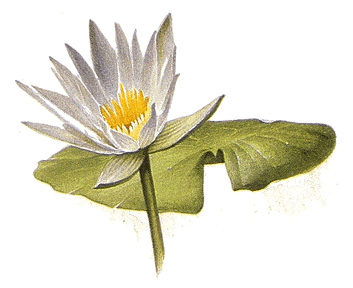Lotus is the common name for many different kinds of plants. The lotus that is known in most places is the Egyptian water lily. The American lotus is also a well-known plant.

The Egyptian water lily is a familiar sight along the Nile River and neighboring streams. This plant has white or rose-purple flowers that may be 1 foot (30 centimeters) across. They grow on a weak stalk, 4 to 8 feet (1.2 to 2.4 meters) long, and rise only a little above the water. The leaves spread out on the water’s surface.
The lotus was a sacred flower to the people of Egypt, India, and China. It is also the national flower of India. A species of the lotus appears in ancient Egyptian art.
The American lotus is a close relative of the East Indian lotus. It also is known as the water chinquapin and yellow water lily. Its yellow flowers and leaves are on stout stalks that stand 2 to 3 feet (61 to 91 centimeters) above the water. There is a large lotus bed in Grass Lake, about 50 miles (80 kilometers) northwest of Chicago. These plants cover about 600 acres (240 hectares), and make a wonderful sight in August. Other lotus beds are found near New York City; in Monroe, Michigan; in southern California; and in the valleys of the Missouri and Mississippi rivers.
The scientific name Lotus has nothing to do with the common name lotus. It is a genus of the pea family and consists of about 100 species. The flowers are white, yellow, red, or purple, and have a shape and size resembling pea flowers.
See also Trefoil .
